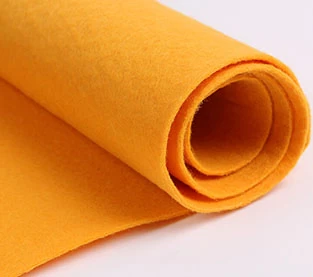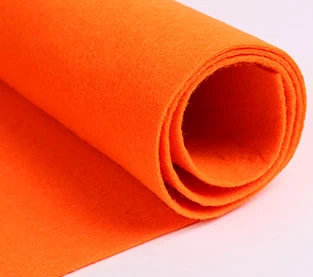Product: ES Material Fiber Nonwoven Fabric For Packaging
Raw Material: PP+PE
Nonwoven Technology: thermal bonded
Dotted Design: dot or plain
Gram: 25 gsm - 30 gsm
Color: White
Specification: custom
Sample: Can be provided without charge, freight to be collect
Applications:
Medical(20-60gsm): face masks,diapers,bed sheets,curtains,pillow covers,sanitary,etc
Packaging(25-30gsm): tea bag, coffee bag/filter paper, dust-proof covers.etc
Product: ES Thermal Bonded Non Woven Fabric For Tea Bag
Raw Material: PP+PE
Nonwoven Technology: thermal bonded
Dotted Design: dot or plain
Gram: 25 gsm - 30 gsm
Color: White
Specification: custom
Sample: Can be provided without charge, freight to be collect
Applications:
Medical(20-60gsm): face masks,diapers,bed sheets,curtains,pillow covers,sanitary,etc
Packaging(25-30gsm): tea bag, coffee bag/filter paper, dust-proof covers.etc
Product: Composite Non Woven Paper Desiccant Packaging Material
MOQ: 1000 kg
Material: Composite Non Woven Paper
Specification: Custom sizes.
Design: Welcome custom logo and design. Welcome OEM.
Color: Full Color of CMYK,Pantone Color as customer requirements
Weight: Based on size & material,thickness
Delivery Time: 10-15 days after confirmed the final artwork and order
Product: Desiccant Wrapping Paper
MOQ: 1000 kg
Material: DuPont Material
Specification: Custom sizes.
Design: Welcome custom logo and design. Welcome OEM.
Color: Full Color of CMYK,Pantone Color as customer requirements
Weight: Based on size & material,thickness
Delivery Time: 10-15 days after confirmed the final artwork and order
Product: Bi-component Non Woven Fabric Desiccant Packaging Material
MOQ: 1000 kg
Material: Bi-component Non Woven Fabric
Specification: Custom sizes.
Design: Welcome custom logo and design. Welcome OEM.
Color: Full Color of CMYK,Pantone Color as customer requirements
Weight: Based on size & material,thickness
Delivery Time: 10-15 days after confirmed the final artwork and order
Product: Spunbond Non Woven Fabric Custom Desiccant Packaging Material
MOQ: 1000 kg
Material: Spunbond Non Woven Fabric
Specification: Custom sizes.
Design: Welcome custom logo and design. Welcome OEM.
Color: Full Color of CMYK,Pantone Color as customer requirements
Weight: Based on size & material,thickness
Delivery Time: 10-15 days after confirmed the final artwork and order
A: The melting point of the existing lowmelting point fiber is advertised at 110 ° C, but this temperature is only the softening temperature of thelow melting point fiber. Whether it is Japan 4080, Korea 4080, South Asia 4080,or Far East 4080, it takes about 150 ° C to completely melt. Therefore, the most suitable processing andsetting temperature should be the minimum requirement of 150 °C x 3 minutes for the lowesttemperature portion of the non-woven fabric during heating.
Causes of static electricity generatedduring the production of non-woven fabrics
Answer: The problem of static electricitygenerated during the production of non-woven fabrics(China Polyester Felt Sheet Manufacturer) is mainly caused by the lowmoisture content in the air when the fibers are in contact with the clothing.It can be divided into the following points:
(a) The weather is too dry and the humidityis not enough.
(b) When there is no oil on the fiber,there is no antistatic agent on the fiber. Since the moisture regain of thepolyester cotton is 0.3%, the lack of an antistatic agent results in generationof static electricity during production.
(c) The fiber oil is low, and the relativeelectrostatic agent content will also generate static electricity.
(d) SILICONE polyester cotton has almost nomoisture on the oil because of the special molecular structure of the oil. Itis relatively easy to generate static electricity during production. Usually,the slip of the hand feels proportional to the static electricity. The smootherSILICONE cotton is more static. Big.
(e) Methods to prevent static electricityIn addition to humidification in the production work room, it is also animportant task to effectively eliminate oil-free cotton during the feedingstage.


Why are non-woven fabrics produced underthe same processing conditions uneven?
Answer: The reasons for the uneventhickness of the nonwoven fabric(Polyester Felt On Sales) under the same processing conditions may be asfollows:
(a) Non-uniformity of low-melting fiber andconventional fiber blending: Different fibers have different cohesion.Generally speaking, low-melting fibers have greater cohesion than conventionalfibers and are less likely to be dispersed. For example, Japan 4080, SouthKorea 4080, South Asia's 4080 or Far East's 4080 have different cohesion. Ifthe low-melting fiber is unevenly dispersed, the low-melting fiber content isless, because the mesh structure cannot be formed, and the non-woven fabric isthin. Relatively thicker than the low-melting fiber content.
(b) Incomplete melting of low-meltingfiber: Incomplete melting of low-melting fiber, the main reason is that thetemperature is not enough. For non-woven fabrics(Needle Punched Felt Fabric Factory) with low basis weight, it isusually not easy to produce insufficient temperature, but for high basisweight, high Thickness products require special attention. The non-woven fabricat the edge has a thick heat, and the non-woven fabric is usually thick. Thenon-woven fabric in the middle portion is less likely to form a thinnernon-woven fabric because of the heat.
(c) High shrinkage of fiber: Whether it isconventional fiber or low-melting fiber, if the hot air shrinkage rate of thefiber is high, the problem of uneven thickness is likely to occur due to theshrinkage problem during the production of the nonwoven fabric.